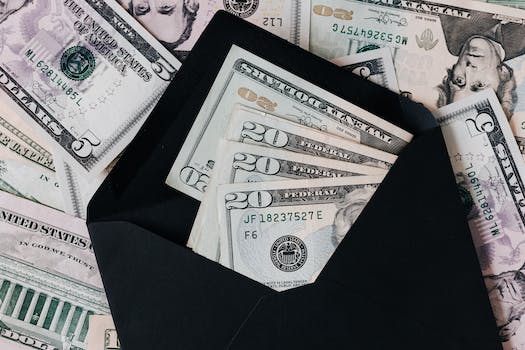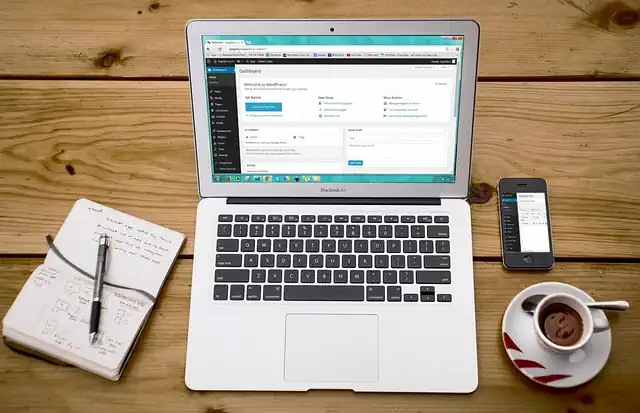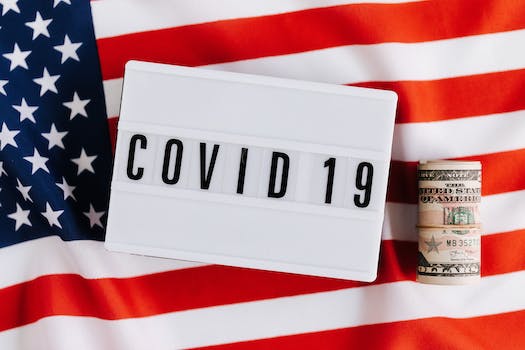How To Save Money As A Elementary Student
Introduction

As an elementary student, it’s never too early to start learning about the importance of saving money. By developing good saving habits early on, you can set yourself up for financial success in the future. Here are some tips on how to save money as an elementary student:
Create a Budget Plan
As an elementary student, it’s never too early to start learning about money management. Whether you receive an allowance or earn money from doing chores, it’s important to understand how to save and spend wisely. One of the best ways to do this is by creating a budget plan.
A budget plan is a tool that helps you keep track of your income and expenses. It allows you to see where your money is going and helps you make informed decisions about how to allocate your funds. Here are some steps to help you create a budget plan:
1. Determine your income: The first step in creating a budget plan is to determine how much money you have coming in. This could be from an allowance, birthday money, or any other source of income. Write down the amount of money you receive each week or month.
2. List your expenses: Next, make a list of all your expenses. This could include things like snacks, toys, or other items you like to buy. Be sure to include any regular expenses, such as school supplies or extracurricular activities.
3. Categorize your expenses: Once you have a list of your expenses, categorize them into different groups. For example, you could have a category for food, toys, and school supplies. This will help you see where you are spending the most money.
4. Set a savings goal: After you have determined your income and expenses, it’s time to set a savings goal. This could be a specific amount of money you want to save each week or month. Having a savings goal will help you stay motivated and focused on your budget plan.
5. Make adjustments: If you find that you are spending more money than you are making, it’s time to make some adjustments. Look for areas where you can cut back on expenses, such as buying fewer snacks or toys. You could also consider finding ways to earn more money, such as doing extra chores around the house.
6. Track your progress: Finally, it’s important to track your progress. Keep a record of your income and expenses each week or month. This will help you see how well you are sticking to your budget plan and whether you need to make any further adjustments.
Creating a budget plan may seem daunting at first, but it’s a valuable skill that will serve you well throughout your life. By learning how to manage your money wisely, you can avoid debt and build a strong financial foundation for your future. So why not start today? Sit down and create a budget plan that works for you. You’ll be glad you did!
Pack Your Own Lunch
As an elementary student, it can be tough to save money. You may not have a job or a steady income, but there are still ways to cut back on expenses and save some cash. One of the easiest ways to do this is by packing your own lunch.
Not only is packing your own lunch cheaper than buying lunch at school, but it can also be healthier and more customizable. Here are some tips for packing a budget-friendly and delicious lunch:
1. Plan ahead
Before you start packing your lunch, take some time to plan out what you want to eat for the week. This will help you avoid last-minute trips to the grocery store or resorting to unhealthy snacks. Make a list of the ingredients you need and stick to it when you go shopping.
2. Use leftovers
If you have leftovers from dinner, don’t let them go to waste! Pack them up in a container and bring them to school for lunch the next day. This is a great way to save money and reduce food waste.
3. Buy in bulk
Buying in bulk can be a great way to save money on snacks and other lunch items. Look for deals on items like granola bars, crackers, and fruit cups. You can also buy larger packages of items like cheese and deli meat and portion them out for the week.
4. Make your own snacks
Instead of buying pre-packaged snacks, try making your own. You can make your own trail mix with nuts, seeds, and dried fruit, or bake your own granola bars. This is not only cheaper, but it also allows you to control the ingredients and make healthier choices.
5. Invest in reusable containers
Investing in reusable containers can save you money in the long run. Instead of buying disposable plastic bags and containers, opt for reusable ones that you can wash and use again. This is not only better for the environment, but it also saves you money over time.
6. Get creative
Don’t be afraid to get creative with your lunches! Try making your own wraps or sandwiches with different types of bread and fillings. You can also mix and match different fruits and vegetables to create a colorful and nutritious lunch.
Packing your own lunch may seem like a small change, but it can make a big difference in your budget. By planning ahead, using leftovers, buying in bulk, making your own snacks, investing in reusable containers, and getting creative, you can save money and eat healthier at the same time. So next time you’re tempted to buy lunch at school, remember that packing your own lunch is a smart and budget-friendly choice.
Use Public Transportation
As an elementary student, you may not have a lot of money to spend on transportation. However, there are ways to save money and still get around town. One of the best ways to save money is by using public transportation.
Public transportation is a great way to get around town without spending a lot of money. Many cities have buses, trains, and subways that can take you to your destination. These modes of transportation are often much cheaper than taking a taxi or driving your own car.
To use public transportation, you will need to purchase a ticket or pass. Many cities offer discounted passes for students, so be sure to ask about these options. You can also save money by purchasing a monthly pass instead of buying individual tickets.
When using public transportation, it is important to plan your route ahead of time. Look up the bus or train schedule and plan your trip accordingly. This will help you avoid waiting around for a long time and missing your ride.
Another way to save money on transportation is by walking or biking. If you live close to your school or other destinations, consider walking or biking instead of taking public transportation. This will not only save you money, but it is also a great way to get exercise and enjoy the outdoors.
If you do need to take public transportation, try to avoid rush hour. During peak hours, buses and trains can be crowded and uncomfortable. By traveling during off-peak hours, you can save money and have a more comfortable ride.
When using public transportation, it is important to be aware of your surroundings. Keep your belongings close to you and be aware of any suspicious activity. If you feel uncomfortable or unsafe, don’t hesitate to ask for help or get off at the next stop.
In addition to using public transportation, there are other ways to save money as an elementary student. One way is to pack your own lunch instead of buying food at school. This can save you a lot of money over time and also allows you to choose healthier options.
Another way to save money is by shopping at thrift stores or garage sales. You can often find gently used clothing and toys for a fraction of the cost of buying new. This is a great way to save money and also reduce waste.
Finally, consider participating in free or low-cost activities in your community. Many cities offer free concerts, festivals, and other events that are open to the public. These activities are a great way to have fun and meet new people without spending a lot of money.
In conclusion, there are many ways to save money as an elementary student. Using public transportation is a great way to get around town without spending a lot of money. By planning your route ahead of time and traveling during off-peak hours, you can save money and have a more comfortable ride. Additionally, packing your own lunch, shopping at thrift stores, and participating in free or low-cost activities are all great ways to save money and enjoy your time as an elementary student.
Shop for School Supplies on Sale
As an elementary student, it’s important to learn how to save money early on. One way to do this is by shopping for school supplies on sale. Here are some tips on how to save money while still getting everything you need for the school year.
First, start by making a list of all the supplies you need. This will help you stay organized and avoid buying unnecessary items. Once you have your list, start looking for sales at your local stores. Many stores have back-to-school sales in the summer, so keep an eye out for flyers and advertisements.
Another way to save money is by shopping online. Many online retailers offer discounts and free shipping on school supplies. Just be sure to compare prices and read reviews before making a purchase.
If you’re on a tight budget, consider buying generic or store-brand items instead of name-brand products. These items are often just as good as the more expensive options, but cost less. You can also look for coupons and promo codes to use at checkout.
When shopping for school supplies, don’t forget to check your local dollar store. They often have a wide selection of school supplies at a fraction of the cost of other stores. Just be sure to check the quality of the items before purchasing.
Another way to save money is by reusing items from previous years. If you still have notebooks, pencils, or other supplies from last year that are still in good condition, there’s no need to buy new ones. Just make sure to check with your teacher to see if any new supplies are required for the upcoming school year.
Finally, consider buying in bulk. If you have siblings or friends who also need school supplies, consider buying in bulk to save money. Many stores offer discounts for buying in bulk, so it’s worth checking out.
In conclusion, there are many ways to save money on school supplies as an elementary student. By shopping for sales, buying generic or store-brand items, reusing items from previous years, and buying in bulk, you can get everything you need for the school year without breaking the bank. Just remember to stay organized and compare prices before making a purchase. With a little bit of effort, you can save money and still have everything you need for a successful school year.
Participate in Free Activities
As an elementary student, it can be tough to save money. You may not have a job or a steady income, and you may not have a lot of control over your spending. However, there are still plenty of ways that you can save money and build good financial habits. One of the best ways to do this is by participating in free activities.
Free activities are a great way to have fun without spending a lot of money. There are plenty of free activities available for elementary students, whether you’re interested in sports, arts and crafts, or just hanging out with friends. Here are some tips for finding and participating in free activities:
1. Check with your school or community center.
Your school or community center may offer free activities for students. These could include after-school clubs, sports teams, or arts and crafts classes. Check with your school or community center to see what’s available. You may be surprised at the variety of free activities that are offered.
2. Look for free events in your community.
Many communities offer free events throughout the year. These could include festivals, concerts, or outdoor movie screenings. Check your local newspaper or community website to see what’s coming up. You may find that there are plenty of free events that you can attend with your friends or family.
3. Take advantage of free resources.
There are plenty of free resources available for elementary students. For example, your local library may offer free books, movies, and music that you can borrow. You can also find free educational resources online, such as Khan Academy or Scholastic. Take advantage of these resources to learn new things and have fun without spending any money.
4. Get creative.
You don’t need a lot of money to have fun. Use your imagination to come up with fun activities that don’t cost anything. For example, you could have a picnic in the park, play a game of tag with your friends, or create your own art projects using materials you find around the house.
By participating in free activities, you can save money and build good financial habits. You’ll learn to have fun without spending a lot of money, and you’ll develop a sense of resourcefulness and creativity. Here are some additional tips for making the most of your free activities:
1. Set goals.
Think about what you want to achieve by participating in free activities. Do you want to make new friends, learn new skills, or just have fun? Setting goals can help you stay motivated and focused.
2. Be consistent.
Make a commitment to participate in free activities on a regular basis. This will help you build good habits and make the most of your time.
3. Be open-minded.
Try new things and be open to new experiences. You may discover a new hobby or interest that you never knew you had.
4. Have fun!
Remember that the most important thing is to have fun. Don’t worry too much about achieving specific goals or outcomes. Just enjoy yourself and make the most of your free time.
In conclusion, participating in free activities is a great way to save money and build good financial habits as an elementary student. There are plenty of free activities available, whether you’re interested in sports, arts and crafts, or just hanging out with friends. By setting goals, being consistent, being open-minded, and having fun, you can make the most of your free time and develop valuable skills and habits that will serve you well in the future.
Save Your Allowance
As an elementary student, it’s never too early to start learning about the value of money and how to save it. Whether you receive an allowance from your parents or earn money from doing chores, there are plenty of ways to save your money and make it go further.
First and foremost, it’s important to set a savings goal. This could be something as simple as saving up for a new toy or game, or something more long-term like saving for college. Once you have a goal in mind, it’s easier to stay motivated and focused on saving your money.
One of the easiest ways to save money as an elementary student is to simply save a portion of your allowance each week. If you receive $5 a week, try saving $1 or $2 of it. Over time, those small amounts will add up and you’ll be surprised at how much you’ve saved.
Another way to save money is to avoid impulse purchases. It can be tempting to spend your money on the latest toy or gadget, but it’s important to think about whether or not you really need it. Before making a purchase, ask yourself if it’s something you’ll use or play with for a long time, or if it’s just a passing fad.
If you do decide to make a purchase, consider buying used or second-hand items. You can often find gently used toys and games at thrift stores or online marketplaces for a fraction of the cost of buying new. Not only will you save money, but you’ll also be helping to reduce waste and protect the environment.
Another way to save money is to look for deals and discounts. Many stores offer sales or coupons that can help you save money on the things you need or want. Keep an eye out for these deals and take advantage of them when you can.
Finally, consider starting a savings account. Many banks offer savings accounts specifically for children, which can be a great way to learn about saving and managing money. You can deposit your allowance or any money you earn from doing chores into your savings account, and watch your money grow over time.
In conclusion, there are many ways to save money as an elementary student. By setting a savings goal, avoiding impulse purchases, buying used items, looking for deals and discounts, and starting a savings account, you can make your money go further and learn valuable lessons about money management. Remember, it’s never too early to start saving and building good financial habits that will last a lifetime.
Start a Small Business
As an elementary student, you may not have a lot of money to spend on the things you want. However, there are ways to save money and even earn some extra cash. One way to do this is by starting a small business.
Starting a small business may sound intimidating, but it can be a fun and rewarding experience. You can turn your hobbies and interests into a profitable venture. Here are some tips on how to start a small business as an elementary student.
First, think about what you enjoy doing. Do you like baking, making crafts, or drawing? These are all skills that can be turned into a business. Once you have an idea, do some research to see if there is a demand for your product or service. You can ask your friends and family if they would be interested in buying what you have to offer.
Next, create a business plan. This doesn’t have to be a formal document, but it should outline your goals, target market, pricing, and marketing strategy. You can also include a budget to help you keep track of your expenses and profits.
Once you have a plan in place, it’s time to start making your product or offering your service. Make sure to use high-quality materials and put effort into your work. This will help you stand out from the competition and attract customers.
When it comes to pricing, make sure to cover your costs and make a profit. You can research similar businesses to see what they charge and adjust your prices accordingly. Don’t be afraid to experiment with different pricing strategies to see what works best for you.
Marketing is also an important aspect of running a small business. You can create flyers or posters to hang up around your neighborhood, or even create a website or social media page to promote your business. Make sure to include high-quality photos of your products or services and highlight what makes you unique.
As your business grows, you may want to consider expanding your offerings or hiring help. You can also look into selling your products at local markets or events to reach a wider audience.
Starting a small business as an elementary student can be a great way to save money and learn valuable skills. It can also be a fun way to express your creativity and share your passions with others. With some hard work and dedication, you can turn your small business into a successful venture.
Conclusion
Conclusion: As an elementary student, there are many ways to save money. Some of the ways include setting a budget, saving coins, avoiding impulse buying, and finding ways to earn money. By following these tips, students can develop good financial habits that will benefit them in the future.







